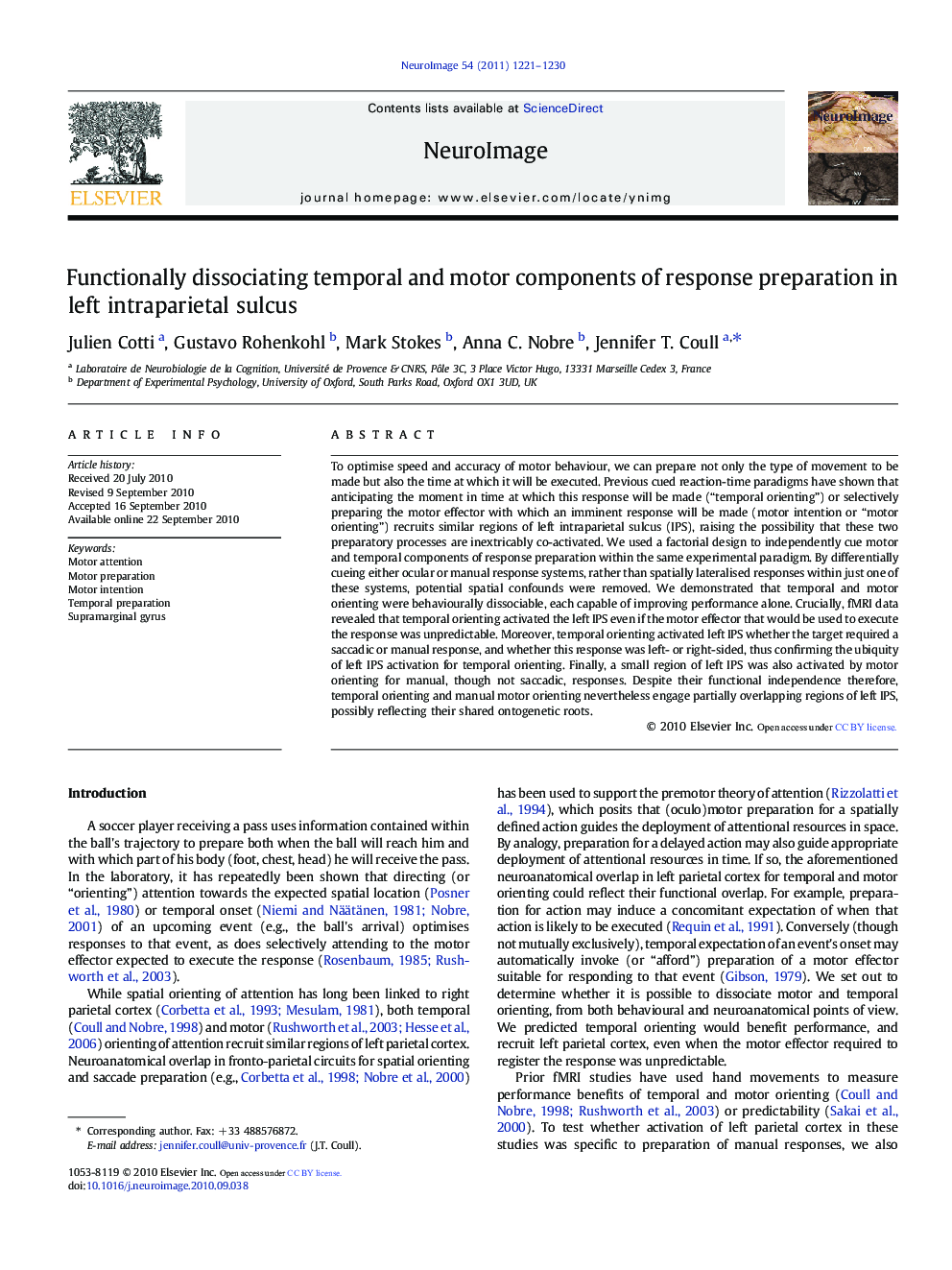| Article ID | Journal | Published Year | Pages | File Type |
|---|---|---|---|---|
| 6034379 | NeuroImage | 2011 | 10 Pages |
To optimise speed and accuracy of motor behaviour, we can prepare not only the type of movement to be made but also the time at which it will be executed. Previous cued reaction-time paradigms have shown that anticipating the moment in time at which this response will be made (“temporal orienting”) or selectively preparing the motor effector with which an imminent response will be made (motor intention or “motor orienting”) recruits similar regions of left intraparietal sulcus (IPS), raising the possibility that these two preparatory processes are inextricably co-activated. We used a factorial design to independently cue motor and temporal components of response preparation within the same experimental paradigm. By differentially cueing either ocular or manual response systems, rather than spatially lateralised responses within just one of these systems, potential spatial confounds were removed. We demonstrated that temporal and motor orienting were behaviourally dissociable, each capable of improving performance alone. Crucially, fMRI data revealed that temporal orienting activated the left IPS even if the motor effector that would be used to execute the response was unpredictable. Moreover, temporal orienting activated left IPS whether the target required a saccadic or manual response, and whether this response was left- or right-sided, thus confirming the ubiquity of left IPS activation for temporal orienting. Finally, a small region of left IPS was also activated by motor orienting for manual, though not saccadic, responses. Despite their functional independence therefore, temporal orienting and manual motor orienting nevertheless engage partially overlapping regions of left IPS, possibly reflecting their shared ontogenetic roots.
Research HighlightsâºAnticipating when and how to respond can be functionally and neurally dissociated. âºTemporal orienting (when) engages left IPS for both oculomotor and manual responses. âºMotor orienting (how) engages left IPS only for manual, not oculomotor, responses. âºManual action circuits may be functionally recycled for anticipating when to respond.
